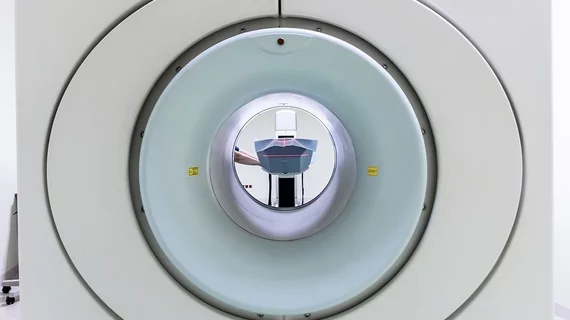MRI biomarkers of Crohn's disease activity may reduce need for endoscopy
MRI measurement of small bowel motility was found to be as effective as invasive techniques in measuring Crohn's disease activity, authors of a recent Radiology study reported. The method may reduce the need for endoscopy.
MR enterography has gained acceptance for diagnosing and monitoring Crohn's disease, but scoring based on features such as wall thickness and T2 signal remain time consuming, thus limiting its clinical use, wrote lead author Alex Menys and colleagues.
“Recent software innovations now allow rapid quantitation of segmental bowel motility with minimal user input,” they added. “Furthermore, initial data suggests that improvements in motility in response to treatment may be better able to predict early treatment outcome compared with standard MRI activity scores."
In this prospective study, Menys et al. set out to determine the accuracy of MRI-quantified small bowel motility for Crohn's activity compared to endoscopic and histopathologic reference standards.
More than 80 patients received colonoscopy and MR enterography within 14 days at either University College London or Academisch Medisch Centrum in the Netherlands.
Menys and colleagues scored the Crohn's disease endoscopic index of severity (EAIS) and MR index of activity (MaRIA) in the area between the small and large intestine. Terminal ileal motility was determined using an image registration based-motility assessment algorithm (motility).
Overall, the terminal ileal motility was in “good agreement” with endoscopic and histopathologic measurements, the authors wrote. A reduced motility achieved a 92 percent sensitivity for both endoscopically defined and histologically defined active inflammation, Menys and colleagues reported.
“The quantified motility score is an objective biomarker of endoscopic and histopathologic inflammatory activity in Crohn disease and is comparable to previously validated MRI activity scores,” Menys et al. found.
However, reduced motility did sacrifice specificity for endoscopic (61 percent) and histologically (71 percent) defined inflammation.
Nonetheless, the data strongly suggest that motility as a biomarker can be used both for disease detection and for activity quantification, the authors argued.
They believe there remains further opportunity to combine both terminal ileal motility scores and MRI assessment to improve Crohn's disease care.
“Crucially in terms of clinical uptake, motility sequences can be easily added to existing MR enterography protocols with a small time penalty,” they added. “This raises the intriguing possibility of combining structural and functional assessments into a single combined index, which would draw on the strengths of both (for example, using elements of structural MRI activity scores in combination with quantified motility score assessment).”

